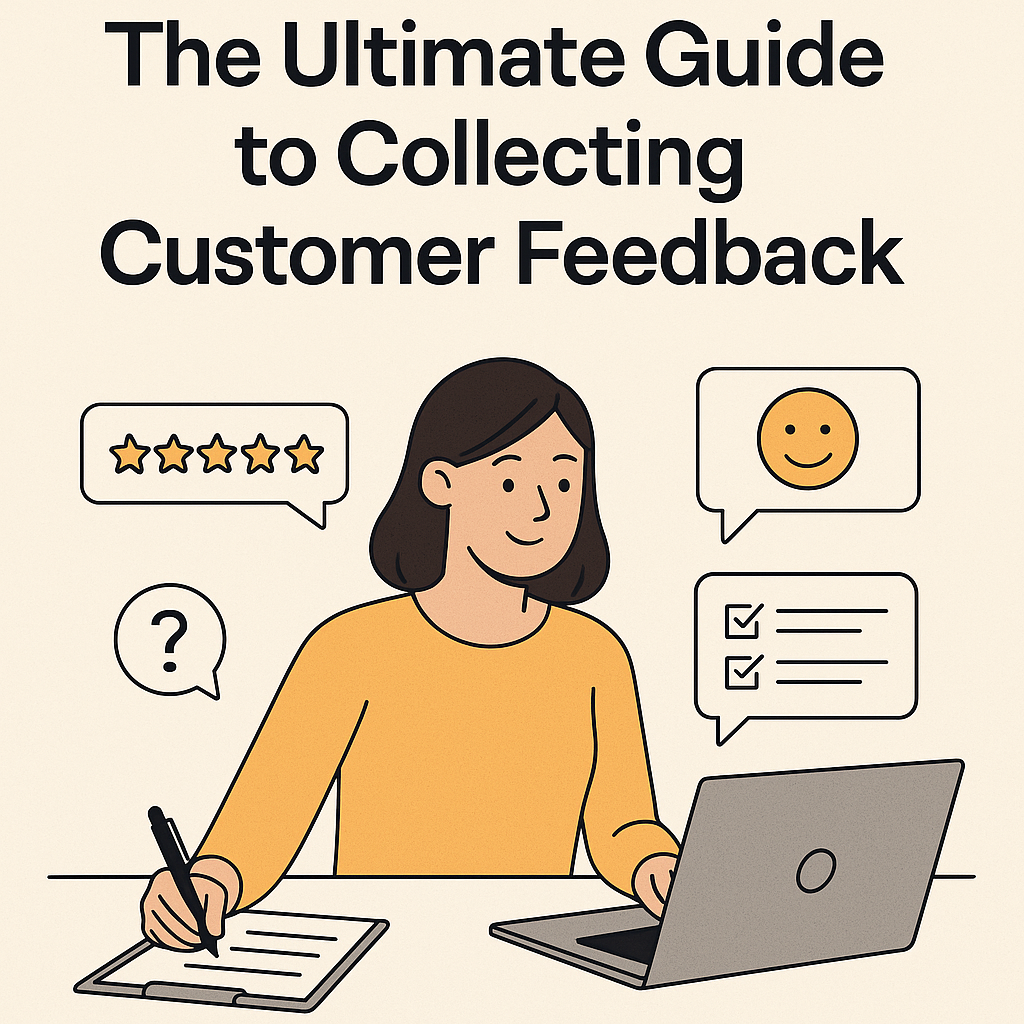

Your product isn’t finished until your customers weigh in. If you want to keep building something people need, love, and share, you need customer feedback at every step. This guide goes beyond basics—drawing on best practices from top SaaS players like Maze and Userpilot—to help you design a feedback engine that fuels real product growth.
Without feedback, product teams are guessing. Feedback gives you:
Big brands like Spotify, Klarna, and Braze have scaled by leaning into rich customer feedback loops far earlier and more often than competitors.
Before you collect feedback, know what kind you need—and why it matters:
Ask something that connects feedback to business outcomes, like: “Does this help users reach activation faster?” or “Will people stay (or refer) if this improves?”
Examples:
Using simple rules—new vs experienced, paid vs trial, feature usage—ensures you ask relevant users relevant questions.
Why this Works: Combines quick scale with opportunity for nuance.
One-on-one feedback probing why certain behaviors or opinions exist—delivers layered insight but requires real synthesis. If you have the time and resources, human researchers are best but AI moderated voice interview tools with AI qualitative insight analysis—like Usercall—can get you high quality insights in 1/100 of the time.
Ask users to perform realistic tasks while you observe: “Find the setting to shut off recurring billing.” You catch confusion where surveys won’t help.
Look for drop-off points, rage-click hot spots, or retention shifts tied to new features. Product analytics channels are the “silent feedback” of user behavior.
Always-on widgets (like “Report a bug” or “Suggest a feature”) live in context and signal that you welcome feedback anytime.
Unfiltered customer sentiment on platforms like G2 or Twitter often surfaces emerging trends or sentiment you might be missing.
The most direct voice of frustration is often in support tickets or sales calls. Use these for:
Microsurveys (1 or 2 questions) have completion rates well above 80%. Save longer forms only for deep-dive interviews.
Right after users complete a task or renewal—they’re most likely to engage. Contextual feedback > blanket emailed surveys.
A rating (0–10 or stars) captures signal; one follow-up open-text question captures narrative, which is where real insight hides.
Even tiny changes—button copy, order of questions, incentives—can move completion rates significantly.
Use user-first names, include regional language, and if you interview, add a video or photo of the interviewer to humanize the experience.
Offer tokens, discount credits, or beta access—but use sparingly; over-incentivizing can pollute genuine feedback.
Group similar sentiments: “too confusing,” “missing ‘export’ button,” “I love the automation.” Use tags so you can quantify volume of each theme.
Chart satisfaction across user segments, then cross‑reference with usage or churn. For example: low CES + high churn = urgent fix.
Plotted as a prioritization matrix: High frequency + high strategic value = quick win. Low frequency + low ROI = backlog 2.0.
Log feature requests, recurring support issues, and appreciation notes. Celebrate “thank‑you” quotes in team standups.
Invite super users to test prototypes in exchange for early access and regular slate of questions.
All three run continuous feedback loops—from lookup widget → survey → interview → scoreboard tag —keeping feedback alive at every step.
PitfallWhy It HappensHow to AvoidSurvey fatigueToo many unsolicited surveysLimit to 3–4 NPS/year and use microsurveys for specific topicsUnrepresentative sampleOnly vocal extremes respondRandomly prompt middle users, not just advocates or criticsConfirmation biasOnly asking questions that confirm your assumptionRoutinely ask “anything else we should know?”, and read behavior dataNo feedback loop closureFails to show action → customers stop respondingAlways reply with changes made or reasons why—not just “thanks”Incentives overusedPeople answer to get reward, not to be helpfulUse sparingly in early phases or interviews; for routine surveys, rely on goodwill or UX-first design
Use different ones at different moments—tailor to key behaviours/pain points.
From there, you can layer more channels and questions, look at support tickets, and scale out.
Collecting customer feedback is not a one-and-done project—it’s a culture. High-performing teams embed feedback at every product decision. If you’re just starting, commit to the feedback loop fast:
Every time someone stops to give feedback—and you follow up—you earn trust, build empathy, and edge closer to building something people not only use but can’t live without.
Ready to start? Pick one touchpoint and send your first 2‑question survey this week. Iterate based on what they actually tell you.
Build with feedback. Win with feedback.